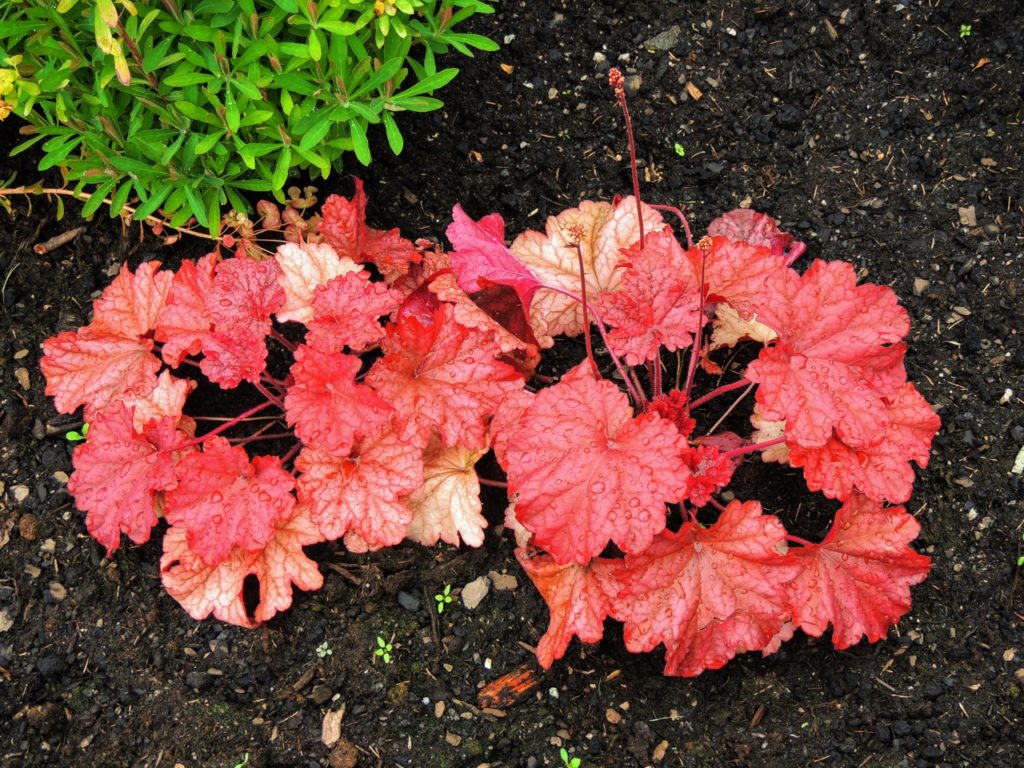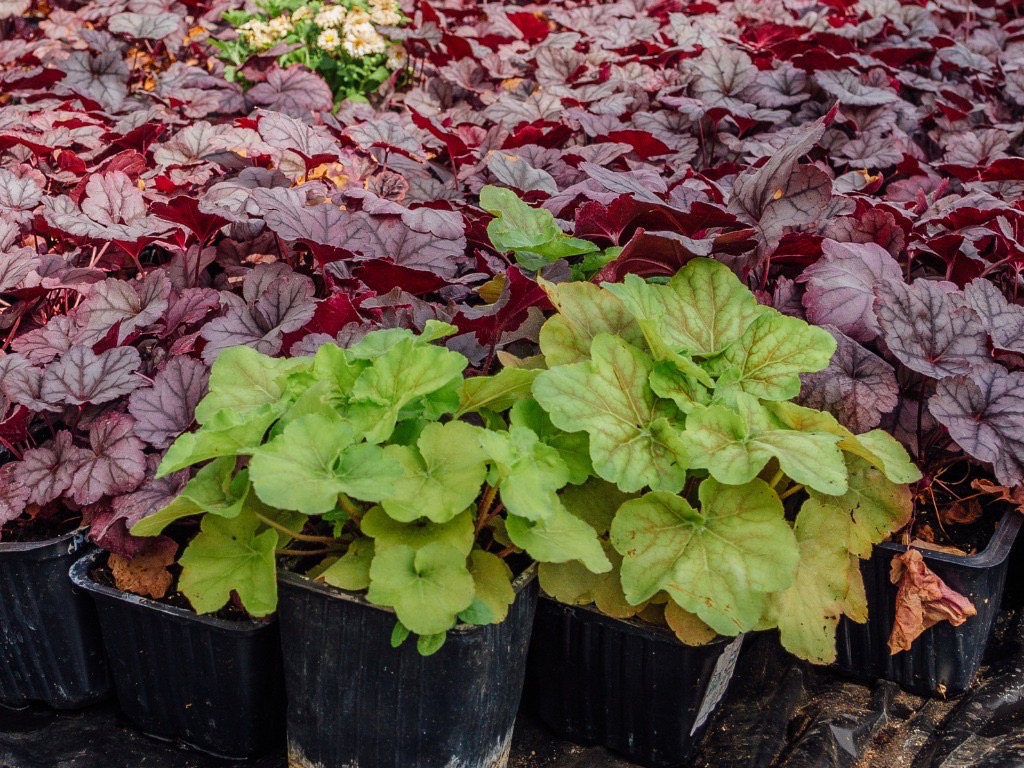Divide Heuchera To Prevent Overcrowding And Keep Your Borders Looking Their Best

PERENNIALS > HEUCHERA > DIVIDING

Elizabeth is a Permaculture Garden Designer, Sustainability Consultant and Professional Writer, working as an advocate for positive change. She graduated from the University of St. Andrews with an MA in English and Philosophy and obtained a Diploma in Applied Permaculture Design from the Permaculture Association.
Reviewed By PETER LICKORISH

Peter is a Horticulture Lecturer and self-employed Horticulturist, with a passion for diverse areas of the industry - from garden design to the science behind plant growth and propagation. He has completed the Royal Horticultural Society’s Master of Horticulture (MHort) Award and lectures on RHS courses at Bedford College.
IN THIS GUIDE
HEUCHERA GUIDES
If you already have a heuchera in your garden, you will already know how attractive and versatile they can be in your planting schemes.
If you have a mature heuchera, by far the easiest and quickest way to propagate it is by means of division.
Division can also help you reduce overcrowding and keep your beds and borders looking good and performing well.
Heuchera is best divided in spring.
To lift and divide heuchera, there is a very simple process to follow:
- Lift the mature heuchera plant.
- Pull off a number of small, vigorous sections from around the edges of the clump.
- Place the old, woody centre of the plant on the compost heap.
- Plant each of the new sections into its own pot filled with free-draining potting mix.
- Place them in a sheltered and shaded spot to root, watering well in hot weather.
- Plant into their final growing positions in autumn or the following spring.
This process is described in a little more detail below.
| Difficulty | Easy |
| Equipment Required | Mature heuchera and a garden spade |
| When To Prune | Spring |
1) Lift The Mature Plant
Heucheras do have a tendency to become woody and bedraggled as they age and over time.
They will tend to produce fewer leaves and flowers and can develop a bare centre.
So, it is best to divide the plants every 3-4 years to keep your garden looking good and to keep them healthy and vigorous.
Division also, of course, allows you to take one plant and turn it into a number of new plants (identical to the parent) for your garden.

The first step is to identify a plant that needs division, or that you wish to propagate in this way.
Once you have chosen a plant for this treatment, the first step is to ease a spade or fork around the edges of the plant and lift it from the soil.
Heuchera is fairly shallow-rooted so you should have little difficulty in lifting it from the ground.
2) Take Divisions
Once you have lifted the clump, identify and pull off a number of small sections that seem healthy and vigorous from around the outer edges.
Pulling these off usually allows for separation at a natural breaking point.
You can make any number of divisions, as long as each one has several roots and at least 2-3 healthy shoots.
“Have you ever started to divide a plant and instead of ending up with a nice small plant, with roots and shoots, you’ve been left with a root-less piece of stem?” asks Horticultural Consultant Peter Lickorish.
“Don’t panic and also don’t discard it! Basal cuttings, short clusters of young leaves attached to a stem, can be taken from heucheras.
“Simply dip their tip in rooting powder and place them in compost, in a small pot, to half their depth.
“The same can be attempted with any accidentally root-free divisions.”
3) Discard The Old Centre
If the centre of a mature plant has become old and woody, and the plant is looking a little worse for wear, you should discard the oldest core section – placing it into your composting system.
4) Pot Up New Divisions
Take each of the new sections you have created and place each one into a pot.

The pot should be filled with a free-draining potting compost with around 25% added horticultural grit.
Bear in mind that heucheras cannot stand waterlogged soil and if you leave them in soggy compost, they are liable to rot.
5) Place In A Suitable Location
Choose a shady, sheltered spot to place your pots, and make sure you water well over the summer, especially in hot and dry weather.
6) Plant Out
In autumn, or the following spring, you can plant out your divisions.
Just remember that most heucheras will prefer a spot with part or dappled shade and well-drained soil.
“When it comes to potting young divisions, never choose a pot that is too much bigger than their root system,” says Peter.
“You may think you’re being generous, but this often leaves plants sitting in a mass of damp compost and can cause them to rot.”
